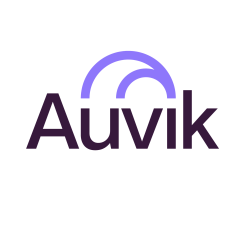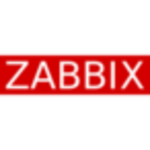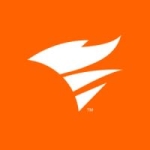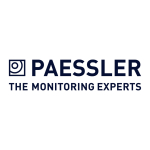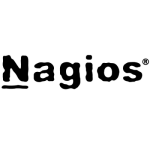What is our primary use case?
I'm one of the biggest Auvik fans out there. I have used it personally, and I have brought it to every single company since 2015 as a product offering or for the internal use case. I currently own a firm, and I am yet to talk with Auvik. When the time comes, I will absolutely be doing its implementation for my company, and I will be offering Auvik to my customers.
I did its implementation for a company in the November of the last year. NetFlow was one of the biggest use cases, and it was for monitoring the type of traffic inside the network. We were also able to do a lot of Syslogging, and with one pane of glass, we were able to remote into the various routers and switches that we had.
It was deployed via Windows services and not as a virtual box inside VMware, which is probably better. We also had a cloud collection point, which was also a failover in our Chicago environment. I was deployed for five different sites along with the NetFlow application.
How has it helped my organization?
Auvik provided one of our clients the ability to see the network in its entirety. We were seamlessly able to implement an encryption deployment because we could see the whole network from a bird's eye view. It was internally implemented, so it didn't really help us in terms of performance, but it improved the productivity of the project on which we were working.
In terms of whether the automation of network mapping enabled junior network specialists to resolve issues directly and freed up senior-level team members to perform higher-value tasks, as an IT Manager, it has allowed me to delegate tasks. What was nice was that a lot of people were annoyed that Auvik just didn't combine everything, and everything was slow when Auvik did combine the whole map. When we broke it out the way Auvik told us to, which was by the site, it allowed me to actually assign a small networking team of two or three personnel essentially to that specific location. Everybody knew what exact equipment they were responsible for, and then it just trickled down to all of the other systems and processes. This made the communication more effective. We could hand off jobs and shifts at almost a seamless rate. When it came to documentation and password inside of Auvik, I knew and felt that they were secure. It has definitely decreased our mean time to resolution. It improved our overall productivity by at least 20%.
Its TrafficInsights feature shows the network bandwidth usage without the need for expensive, in-line traffic decryption. Most of the time, I'm able to get a pretty detailed kind of report or visionary on it. This feature is extremely important. From a managerial standpoint, we wanted to know what people were doing. The pandemic was huge for a lot of work for home people, and we wanted to know what our employees were doing on their computers at home. While they were connected to the VPN, Auvik provided us the ability to see whether they were watching Netflix and things like that, or what other type of bandwidth they were taking up. It was very amazing. We were canning people over it, and we were utilizing it to kind of take a temperature of our culture.
The TrafficInsights feature is helpful in showing where your system is experiencing performance issues. When we have a network problem, I'm able to see where and what's causing it. Back in October, we had some sort of network storm on our layer 3 in Chicago, and we were able to pinpoint different types of traffic going on. It was nothing, and packets were coming back at zero bits and different bits, and it was just noise. We were able to figure out that there was a loop somewhere. We had to physically go down and examine it, but without it, we probably would have chased our tails around or spent a lot more money than we did to resolve the issue.
The TrafficInsights feature has helped in improving our network performance. It improved our understanding of the network and what was going on. It helped us utilize other tools that were in place to block traffic, allow different traffic, or redirect different traffic.
It provides automated, out-of-the-box device configuration backups. I had to go in and do some configuration myself, but it was very simple. It automatically pulled the configuration from the device, and I could download it from Auvik. It probably saved me a couple of hours a week. At $100 or $200 an hour, it could save you a couple of thousand bucks a year.
It has definitely enabled us to consolidate and integrate other tools. Auvik integrates really well with other tools such as Lucidchart and different PSAs such as ConnectWise. With that, I can just utilize more functions inside these solutions. I don't necessarily have to have my Lucidchart. It integrates well where I don't have to add any more products. It is kind of that last missing link theme. It takes away from having to purchase a Visio chart, individually go and pull network reports, or have a product at each site that does that. It has this overarching big brother side. Not having to spend on these tools has probably saved us $10,000 to $20,000 annually in licensing costs. These are the software that you got to get rid of, and they are probably about $10,000 per piece.
What is most valuable?
NetFlow is probably one of the most valuable features. Since starting with Auvik, and seeing how far it has come, NetFlow has been one of the most valuable features. This feature is important because as a network administrator, you always want to examine what type of traffic is going on. You can limit users from watching Netflix on a route, or you can also pinpoint malicious activity going on in the network. So, I really do find Auvik to be a utility, not only from a network standpoint but also from a security standpoint. It provides a very good security feature in a way even though it is not branded like that.
Towards the actual Auvik side or the networking side, one of the most valuable features is its capability to quickly go out, discover, and have the intelligence to either utilize known usernames and passwords (when it comes to SNMP) or ask for the proper credentials. If they weren't provided, then it provides information about how to go retrieve them. When you examine the whole workflow or compare it to SolarWinds Orion, which got hacked, Auvik blows it out of the water because of this feature. This feature is important because when you're monitoring multiple locations and managing multiple employees, it is important to have that piece fit inside of that business continuity. I like to involve those things in security and business continuity when I am selling, deploying, or implementing it, thus making it the culture behind the product.
Its network discovery capabilities are very impressive. The discovery piece is amazing. I don't know if they have an AI or some type of advanced intelligence inside of their program that helps with the discovery piece. I haven't seen anything that discovers products that well and is able to label them, tag them, and pull as much information about them. I don't know what drives that engine, but I'm just absolutely blown away by it. It is cool.
Its ease of use is great. I was very pleased with how the junior employees, and even a couple of senior employees who had not worked with the product, were able to jump in, learn quickly, and work through the interface.
What needs improvement?
Some of the automation pieces for discovery still need a little bit more improvement. I wouldn't mind seeing some more security features as that's the world we're driving into. I know Auvik probably wants to try to keep itself separate because that's its brand, but even if they brought on board another brand that was able to plug into them, it would benefit us. It would lower some more network security costs if as a company, they are a one-stop shop. They have already got the network piece going. If they improved in that area and focused a lot on that, they would gain me as a customer, and they would probably gain a lot of others.
For how long have I used the solution?
I have been using Auvik since 2015.
What do I think about the stability of the solution?
I've been pretty impressed with its stability. I've been with Auvik for such a long time, and they've improved over the years. That's why I have nothing bad to say about them. Its stability in 2015 was great, but now with the redundancy and this cloud thing that they've got going, it is even more impressive.
What do I think about the scalability of the solution?
They've improved it in that area a lot. It is scalable now.
In the previous job, we only paid for 20 billable endpoints, but we had more than 100 endpoints. We had three users. My title there was a senior systems architect, and then I had a network engineer under me. Above me was my boss who was the Chief Information Officer.
If I had to rate its usage on a scale of one to 10 with 10 being eight hours a day and one being twice a week, they would probably fall in the five range. They probably use it four out of five days and for an hour or an hour and a half a day.
Currently, I don't have it as an offering in my own company. We are brand new, and I just opened this firm this year in February. As we get the ground and the ball rolling, we will be an Auvik customer within the next six months for sure.
How are customer service and support?
Their technical support is the best. You can talk to an Auvik support technician about something Cisco-related. They don't have to, but they are very knowledgeable in that technology, which is so impressive.
I'm glad, and I'm sure that Auvik hires nothing but educated people, which is probably why it's just that much better of an experience. I can talk to them, and they know what I'm talking about. A lot of the things that we talk about are complex things related to the Cisco technology, FortiGate, etc.
Which solution did I use previously and why did I switch?
In the previous job, we had a third-party firm called Transcendent, and they resold SolarWinds Orion, but it was not good. I replaced it shortly with Auvik after Orion was hacked, and then we integrated their team into the product. We had it all on-prem, but we utilized this hybrid thing that Auvik had. If our on-prem collector went down, we weren't completely blind. We had redundancy built into it.
It makes me so much happier to be an Auvik customer and a champion of the product. I'm really glad that Auvik hasn't been touched like SolarWinds Orion. It gives me the confidence to keep utilizing and selling their products.
Auvik automatically updates the network topology at an interval of approximately 60 seconds, and you can also go in there and forcefully update it. We, however, never really relied on that technology. You could click on a spot, and it was a 50:50 shot if we had to move in and relabel it, which was better than SolarWinds where you get a 10% chance of getting it right. So, you're doing 90% of the configuration in SolarWinds versus having to do 40 to 50% in Auvik. That's why Auvik is better.
How was the initial setup?
It was pretty complex. When you are setting up Auvik, you can set up the collector, which is straightforward. However, when you are trying to set up your router and switches, you have to have at least an associate-level degree in Cisco networking, for example, to understand the commands and the things that you need to do to prepare your router or firewall to work or integrate into the Auvik system. You need somebody who knows networking. When it comes to finding those people, they're expensive. It is probably cheaper to go through Auvik's offering at that point. If you have them on staff, utilize them. So, it is complicated, but it is no fault of their own. Auvik was easy, but they can't really control Cisco or the other people who have their technology.
The deployment probably took about two weeks. In terms of comparing the setup time of Auvik with other solutions, Auvik allowed me to do it from one location and in my chair. For other locations, I probably would have had to travel at least twice with a SolarWinds solution. I would have had to deploy it on physical hardware at that location and then use my Cisco DMVPN to make everything toss, which isn't really all that cool or modern. So, Auvik saves me traveling time and money, and I am able to do it from one location. Such cost savings probably translate to $10,000.
Our implementation strategy was to start with our home office, which was our data center here in Milwaukee, and then to set up a redundant site in Chicago. We discovered there, and then we went by the office and deployed it office by office through discovery. We didn't move to the next office till every piece of equipment was accounted for, labeled, and documented.
What about the implementation team?
I have not used any third-party integrator. I did it myself. I also did all the maintenance, which included server maintenance, different updates, patches, backups, etc.
What was our ROI?
They weren't like that, but I can tell you that they've made it.
What's my experience with pricing, setup cost, and licensing?
The cost for all the devices that we were billed at in my last job was about $2500 annually. It wasn't much.
It has the most reasonable pricing as compared to any product out there. I can't complain. It is amazing. It allows me to bundle inside the package what I charge customers per user per month. I don't charge them per device anymore. That's not how we do things in the industry. It is per user per month. The way Auvik is charging us allows me to do it. For example, if they charge $250 for a certain number of seats, I'm just going to write the costs onto per user per month. I have a few leftover licenses to use, which allows me to go out and make some more sales and give some freebies at some shows. So, it makes me very flexible. I am very happy with it.
It is billed by network devices. You could choose which billable device you want. What is really nice is that if you don't want one switch to be billable and the other one to be billable, you can do that. You just won't have the features that the billable switch has, which isn't horrible. Sometimes, you don't need that. What I'm really happy about is that Auvik doesn't force things on you and doesn't say, "You have to have all of this," and that's a great business model.
Sometimes, you can get overages if you go over your agreement per device, but they don't try to nickel-and-dime you on it. They're very reasonable, and it is easy to go in and look and see. They harp on it too. They ask you to go in and check and make sure you have what you want because you have this many licenses.
Which other solutions did I evaluate?
They didn't evaluate any other product.
What other advice do I have?
To anybody utilizing it internally, I would advise going through Auvik directly. You'll pay a little bit more, but you'll have the support as an IT staff unless you want to come through a company like me. Auvik has just recently opened up their company to accept companies that want to utilize it internally. As a consultant with the landscape that I'm looking at right now, I advise Auvik to keep pricing in the same way.
I would advise taking your time and doing your implementation right the first time. You're going to gain more knowledge about your network, and the people coming after you are going to be able to support your network that much easier.
Its ease of use is great, but I firmly believe that if you don't have experience in networking, you're going to fail. If you don't take the time or pay the money to sit down with Auvik and have them teach you to utilize the tool, you're doing yourself a disservice because of what and how inexpensive it is to get the tool and how valuable it is to have their time to teach you how to utilize the tool. They have an implementation team that will walk you through it. You have to pay for this service separately. I utilized this service once, and I've been able to implement it myself. I would highly recommend that somebody without experience should pay for this service at least once in their career.
It doesn't really help us put out fires before people or end-users even get to know that there is a problem. That could be because of the customers that I've had. However, Auvik does allow me to pinpoint the problem right away. I may get the alert two minutes later than my customer alerted me, but I'm able to get a fast resolution in place right away. It is easy. So, that's what I'm very happy about.
As a seller of Auvik, the cost-savings that it provides allow me to be more mobile. I don't have to hire as many employees because I can have them sitting in a chair watching a dashboard, which saves cost. If I'm a customer myself, I don't really see cost savings, and it is just another tool for my IT guys to be successful. So, it doesn't really save costs, but at the same time, it has a positive impact on the network.
As a consultant, Auvik has shown me the habits of end-users or IT staff. For example, Auvik has been able to pick up on rogue, small six-port switches that get plugged in somewhere under somebody's desk. I am also able to see the weird things that get plugged in or turned on in the network. I am also able to have conversations, but it is just weird to see how that technology or software translates to the behavior of these people. It is kind of neat.
Its time to value is what it is. There is a cost to everything, and there is really no value when it comes to implementation. Especially with how I am going to have it implemented in my environment, I have to ask somebody with a reasonable amount of knowledge, and he is going to cost me $80,000 to $100,000 a year to go out and implement. It is just a cost, and there is really no way around it.
I would rate Auvik a 10 out of 10.
Disclosure: PeerSpot contacted the reviewer to collect the review and to validate authenticity. The reviewer was referred by the vendor, but the review is not subject to editing or approval by the vendor. The reviewer's company has a business relationship with this vendor other than being a customer: Reseller

